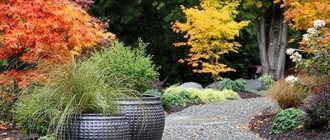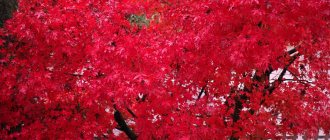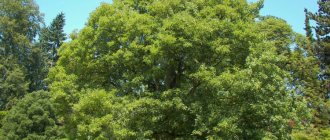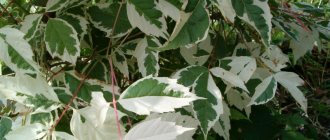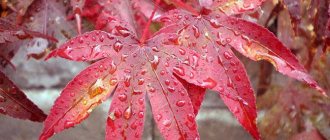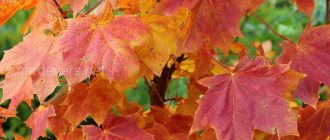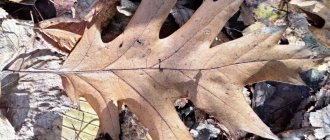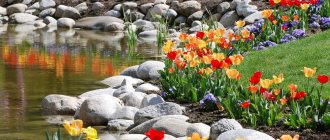An unpretentious plant with different foliage colors and crown shapes: the variety of maple varieties can turn your site into a fairy-tale kingdom of bright accents and star-shaped leaves. Almost all varieties are undemanding to the soil, are drought-resistant and will easily survive stagnant water after spring floods. Maple can be either a tree or a shrub. Have a narrow pyramidal or spherical crown shape. This is why maple is so widely used in landscape design: it is an excellent tapeworm and a wonderful neighbor in an accent landscape composition.
It is worth noting that most maples are especially decorative in spring or autumn, and in summer their foliage acquires classic green shades, standing out from other trees and shrubs only in the shape of the crown and leaves. However, there are specimens that, even in summer, are able to attract glances, make you fall in love with them, and be the center of attention until late autumn.
Maple varieties with red leaf color
Pay attention to the Norway maple Crimson Sentry
notable not only for its pyramidal crown shape, but also for its deep burgundy foliage throughout the season, growing up to 8 meters. It is a light-loving tree, but it will grow quite comfortably in light partial shade. Crimson Sentry has excellent winter hardiness. Quite often used for planting in alleys and as a contrasting element in landscape compositions.
An interesting alternative to the previous crimson beauty - Norway maple Crimson King
. Reaches 15 meters in height and has a classic neat crown shape. The true "Purple King" will be the "star" of any tree and shrub composition due to its dark red foliage with a purple tint and spreading branches. Winters well in the middle zone. As a rule, Crimson King is planted in parks, alleys and large gardens.
Another red-feathered giant worthy of attention is the Royal Red Norway maple.
, winters well in the middle zone. Five and sometimes seven-lobed leaves, reaching a diameter of 20 centimeters, have a bright red color in the spring, which becomes more saturated, purple by mid-summer and brightens in autumn. Royal Red can grow up to fifteen meters in height and almost ten meters in diameter. Annual growth is up to 40 cm. The crown is unevenly dense and broadly pyramidal. This variety of maple will become a spectacular tapeworm on your site.
Purple-leaved sycamore maple (Psevdoplatanus 'Atropurpureum')
A fast-growing deciduous tree about 30 m high, with a 15-meter wide conical crown. The leaves are five-lobed, each lobe has a sharp end. When blooming, the leaves have a brownish-red color, which changes to dark green. The back side of the leaf is covered with thick red hair. At the end of flowering, winged fruits of a dark red color are formed. The tree can be grown in urban gas and pollution conditions. It is frost-resistant and likes to be grown in open, sunny places.
Varieties of maple with variegated foliage
Growing no more than three meters in height, field maple Carnival
will add lightness and sophistication to your garden landscape. Delicate greenish leaves have an unusual milky cream edging. Even sometimes the light color dominates and from a distance it seems as if the tree has a white crown. When the wind sways the leaves, greenish shades appear a little more and the landscape comes to life before our eyes. Low and slow-growing, this maple will add zest to any landscape composition.
Norway maple Drummondii
It can grow up to 12 meters in height and has a dense, wide-pyramidal crown. Like Carnival, this variety is notable for its incredibly beautiful variegated foliage. An uneven whitish stripe borders the light green large leaves of the Drummondi maple. Its young leaves have a delicate pinkish color. This maple will be a worthy backdrop for plants with dark green or red foliage. It has good winter hardiness, but is very sensitive to soil drying out.
The Flamingo ash maple
is attractive not only for its unusual leaf color, but also for its shape.
. Growing up to five meters, it will look great both in a single planting and in a mixed composition. It was not by chance that this maple was called ash-leaved, because the shape of some leaves is, indeed, like that of an ash tree. However, for the most part, the foliage is five or seven-lobed, no more than 20 centimeters in length, and white-green in color. Young leaves have a pleasant pinkish tint, which is why this variety got the name Flamingo. This maple is considered fast-growing, giving growth of up to 50 centimeters per year. Winter hardiness is good.
Yellow ash maple (Acer negundo 'Odessanum')
This tree has an average growth rate and grows to a height of about 6-7 m. It is characterized by the presence of fleecy white shoots. The leaves have a yellowish color and a shiny surface, forming a spherical and very dense crown. This variety is most often propagated by grafting. Flowers form in umbellate inflorescences that densely cover the stems. Trees are sensitive to soil compaction due to their shallow root system. Due to the strong branching of the root shoots, the plant tolerates strong winds well. It likes to be grown in open sunny places, but also does well in partial shade.
Maple varieties with unusual foliage shapes
Someone will say that maple leaves, which are already different from all other trees, are already much more unusual? And there is somewhere! The palmate maple, which grows mostly in Japan, overwinters in the middle zone only under cover, but is still often purchased by lovers of exclusive specimens for planting in their favorite garden. For example, the low-growing palm maple Dissectum Virdis (Dissectum Virdis)
You will certainly remember it not only for the cascading shape of the crown, but also for its small five-lobed leaves, as if specially cut along the veins. I just want to touch this beauty! Delicate green in summer, in autumn the foliage of this maple becomes an unusual crimson hue. Often, maple of this variety is grafted onto a trunk to emphasize the beauty and elegance of the inimitable crown of Dissectum Virdis.
maple Ginnala,
which winters well in the middle zone and is drought-resistant
is also very popular in landscape design. The shape is a shrub that can reach six meters in height. The glossy leaves of the Ginnala maple are three-lobed with a clearly dominant, elongated middle lobe and a slightly pubescent back side. In the summer months they have a pleasant green color, and towards autumn they turn dark red. While the foliage on the surrounding trees and shrubs is still green, this maple looks incredibly impressive against their background. Perfect for both group and single planting, used for decorating coastal areas and hedges.
Sycamore maple (Pseudoplatanus 'Rotterdam')
This species was bred in Rotterdam and is a rather valuable plant species. The tree is large, has a cone-shaped branched crown, which takes on the shape of an ellipse at the age of 5-7 years. In winter, the trunk is covered with green bark. The leaves have the same length and width, which is 10-13 cm. The size of the leaf differs depending on where it grows. The trunk leaves are smaller in size. The leaf blade is dark green and has many bright veins. These trees are slightly frost-resistant; they like to be grown in semi-shaded places and in the sun.
Maple varieties on a trunk
Regular rounded shrub shape of Norway maple Globosum
and good frost resistance allow this variety to be grafted onto a standard, creating an incredibly attractive specimen for planting in a landscape composition, alone against a lawn or in an alley planting. One of the few varieties that categorically does not tolerate stagnant moisture, and therefore it is recommended to choose sunny places for planting away from the lowlands. The diameter of the shrub itself can reach six meters, and therefore, with age, the thickening trunk will one day support a huge dense crown of numerous shoots, strewn with the classic five-lobed leaves of maple. Lush green in the summer months, they turn a pleasant shade of orange by autumn.
Norway maple Golden Globe
, like the previous representative of this species, is ideal for grafting onto a standard and looks incredibly decorative both in mixed landscape compositions and when planted along alleys. Growing up to six meters in diameter, it is also capable of forming a luxurious, dense crown of a regular spherical shape. The peculiarity of this maple is the bright and unusual color of the foliage: orange-yellow in the spring, it turns light green in the summer. And if the maple grows in a well-lit place, its crown will shimmer with golden-yellow hues in the summer months.
Planting and propagation
Each method is good in its own way. Choose areas that are well lit by the sun - then the crown will be denser.
In places with insufficient sunlight, the leaves become small and the saturation is lost.
The propagation of Norway maple by various methods will be discussed below:
Seeds
Simply collecting lionfish and planting it in the ground is not enough. Seeds must be stratified.
To improve germination, in the fall they are placed in sand or peat and kept in the sand at a temperature of no more than 3 degrees.
There is no need to remove the seeds from the wings. Sowed in April. The soil should be moist and fertilized, the optimal depth is 4-5 centimeters.
The appearance of sprouts should be expected in two weeks. By the way, they grow quite quickly - up to 60 cm annually. In just 7 years, a two-meter tree will tower over your site.
Up to 25 years, this type of maple grows in width and height, then it only increases in width. Development slows down or stops completely after age 50.
Saplings
If you have maple seedlings, they can be planted both in the fall (wait for the leaves to fall) and in the spring. It is advisable to do this in March-April, when the buds have not yet bloomed.
Particular attention is paid to the integrity of the root system. When purchasing, choose seedlings with a large lump
The depth of the hole is at least 50 cm; humus is placed at the bottom.
When planting without a clod, carefully straighten the roots to avoid creases, carefully compact them and water them.
Layerings
Another common method used by both beginners and experienced gardeners.
Propagation by cuttings begins with the fact that in the fall you cut woody branches 25 cm long from the tree.
Then you bury them in the sand and store them in the basement so that the soil does not freeze. In spring, plant in prepared soil.
By the way, you don’t have to wait for autumn, but cut the cuttings in the spring, treat them with growth stimulants, and plant them in the ground, covering them with a plastic bottle.
It is important! When planting maple, the distance between trees should be 2-4 meters. Otherwise, large-sized adults will interfere with each other
Silver maple (Acer saccharinum)
This species is one of the largest maple trees, the height of which can exceed 40 m. The crown is spreading and very wide, consisting of silvery, large, five-lobed leaves. The trunk is covered with light gray bark with small grooves. Trees prefer to grow in moist soils with plenty of sunlight. It has a superficial, widely branched root system. Propagated by winged seeds.
